JEROME:
Envy is responsible for the fact that they set a trap for our Lord. What had he done to incite the Pharisees to kill him? Certainly it was because the man had stretched out his hand. Who of the Pharisees did not stretch out his hand on the sabbath day when he was carrying food, when he was offering a drinking cup or performing the other actions that are necessary for nourishment? So if stretching forth one’s hand and lifting up food or drink on the sabbath are not offenses, why should they make this accusation? They themselves are found guilty of doing the same, especially since that stonecutter had not carried anything of the sort that they had but had only stretched out his hand at the order of our Lord.1
CHRYSOSTOM:
Note carefully how he does not cease in his tender care for the infirm yet softens the envy of his adversaries. Hence “great multitudes followed him, and he healed them all; and he charged those that were healed that they should make him known to no one.” But the multitudes seemed more ready to admire him and trail after him than to change their decadent ways.2
ORIGEN:
To the extent that one draws near to Jesus, one does not hold counsel, for no counselor of evil things draws near to Jesus. But when others go out, departing from Jesus, they hold counsel to destroy Jesus, to destroy the Light, the good Way, the Life, the Treasure, the Pearl, Love itself and Peace. If anyone destroys these, he is called a “son of destruction.” But “Jesus, aware of this, withdrew from there.” He had no reason to remain around the sons of destruction. They sought to destroy him, but we, who were not seeking, have found him. This recalls the words of the prophet: “I am found by those who do not seek for me; I have been made manifest to those who were not asking after me.” For he came “to the lost sheep of the house of Israel” who had forgotten their own Shepherd. So Jesus withdraws, not fearing their judgment but to dispel evil. And, lest anyone should suppose that it was through fear that he had withdrawn, Jesus healed everyone, displaying his almighty power. But, as one who does what is fitting, without pride, he sent them away, telling them not to publicize this.3
APOLLINARIS:
Those who teach “in the streets” do this, not for the sake of helping anyone but out of egotism and to hoodwink the gullible. The result of this is that everyone views them with suspicion and they fail to reach the goal of their teaching. Thus the Savior taught us these lessons not only by word. His way of life also taught us not to scream nor to show off but to lead a public life in respect to virtuous actions. For a talkative disposition would be most harmful for us. It is the opposite that is most useful and beneficial.4
THEODORE OF HERACLEA:
He did not eagerly contend with the folly of the rulers, nor did he scream and provoke them to anger against himself. Rather, with gentleness Jesus withdrew slowly so that he might not, in confuting them, cause them to be destroyed while they were still weak in soul like “a bruised reed” or like “smoking flax,” that is, very close to being snuffed out. He bore with them patiently, so as not to reduce them to utter oblivion on account of their weakness, until he had fulfilled the purpose of his dispensation,that is, to bring judgment to a full end. By this dispensation all the nations would come to believe.5
JEROME:
The one who does not stretch out a hand to a sinner and does not carry a brother’s load breaks the crushed reed. And the one who despises the small spark of faith in children extinguishes the smoking wick. Christ did neither of these. He came for this purpose: to save those who were perishing.6
Footnotes
- COMMENTARY ON MATTHEW 2.12.14. Simonetti, M. (Ed.). (2001). Matthew 1–13 (p. 239). Downers Grove, IL: InterVarsity Press.
- THE GOSPEL OF MATTHEW, HOMILY 40.2. Simonetti, M. (Ed.). (2001). Matthew 1–13 (p. 239). Downers Grove, IL: InterVarsity Press.
- FRAGMENT 252. Simonetti, M. (Ed.). (2001). Matthew 1–13 (pp. 240–241). Downers Grove, IL: InterVarsity Press.
- FRAGMENT 71. Simonetti, M. (Ed.). (2001). Matthew 1–13 (p. 241). Downers Grove, IL: InterVarsity Press.
- FRAGMENT 85. Simonetti, M. (Ed.). (2001). Matthew 1–13 (p. 242). Downers Grove, IL: InterVarsity Press.
- COMMENTARY ON MATTHEW 2.12.20. Simonetti, M. (Ed.). (2001). Matthew 1–13 (p. 242). Downers Grove, IL: InterVarsity Press.

